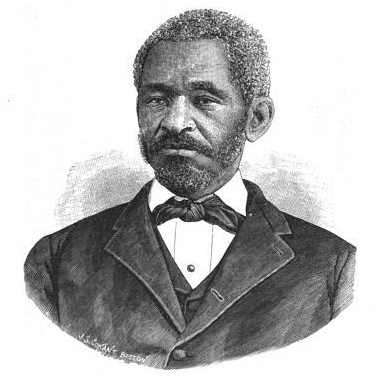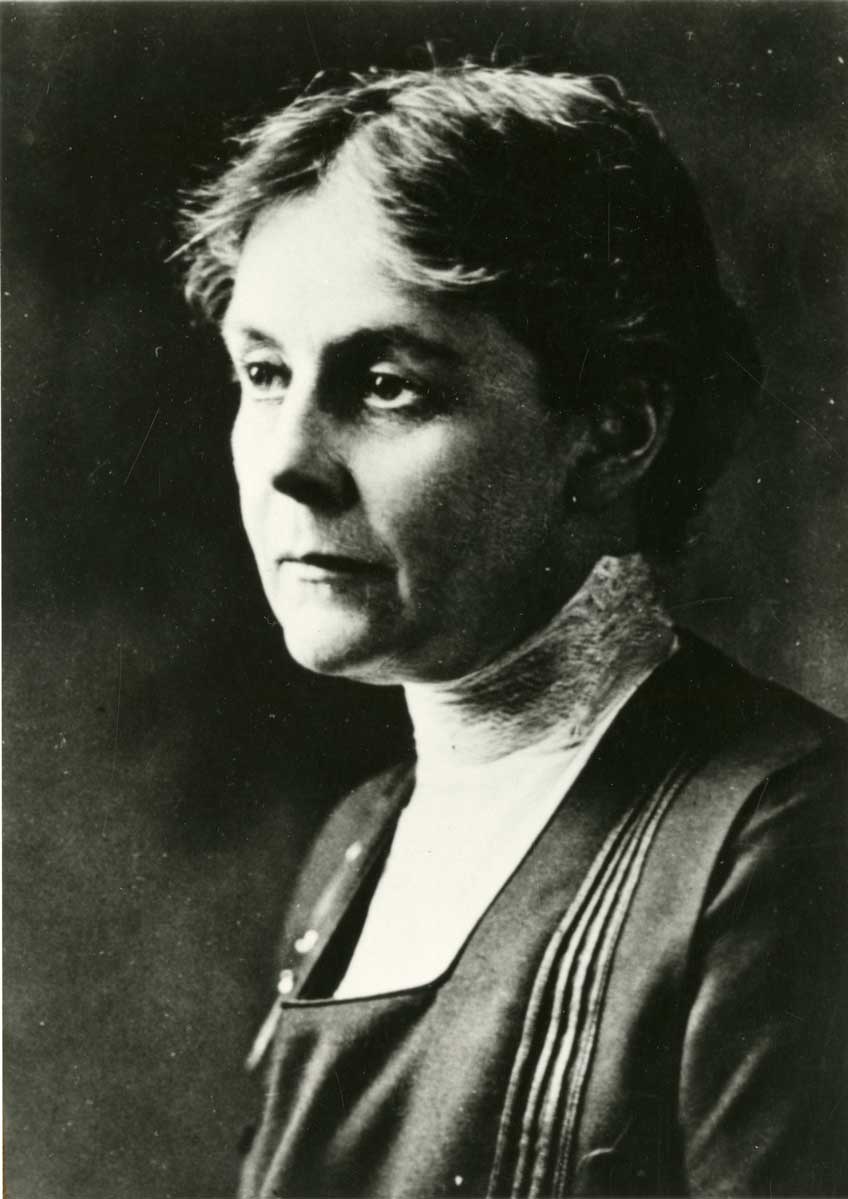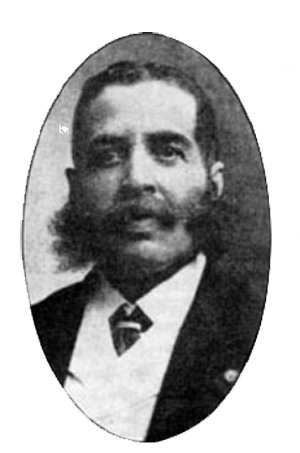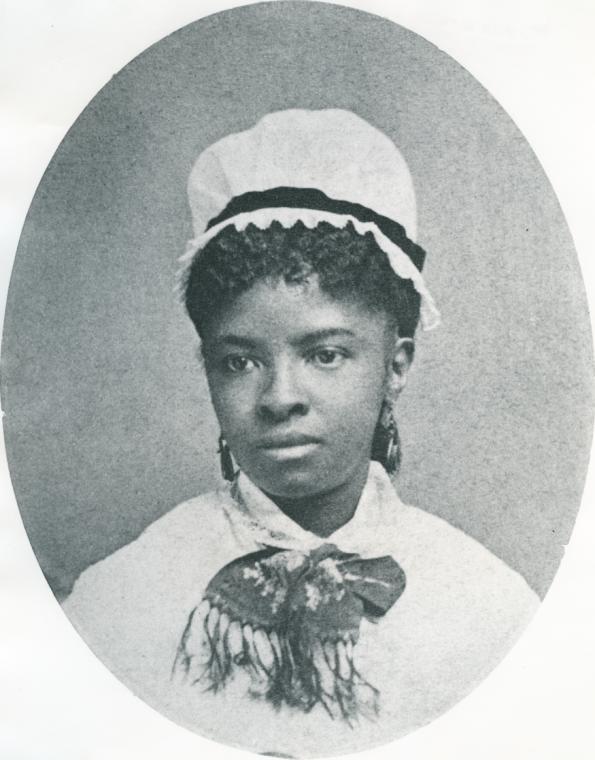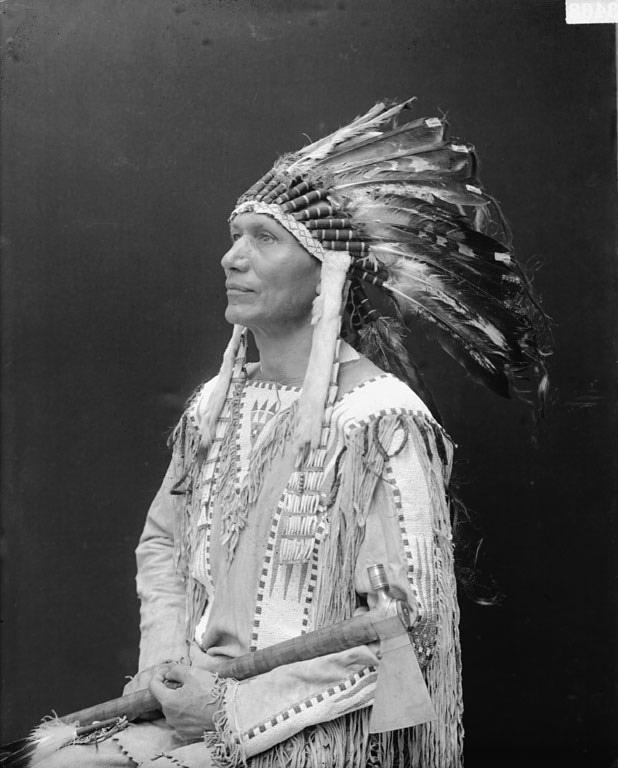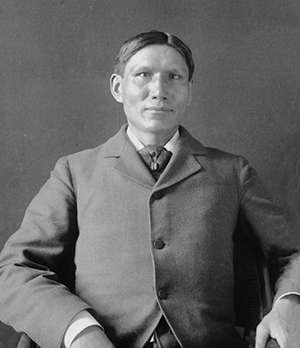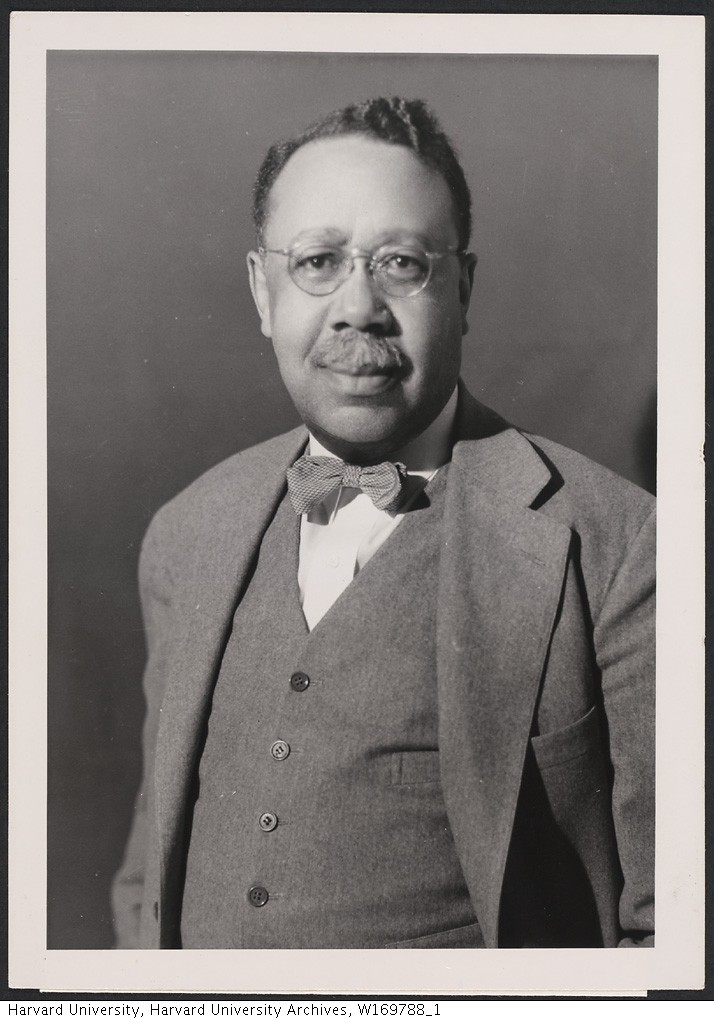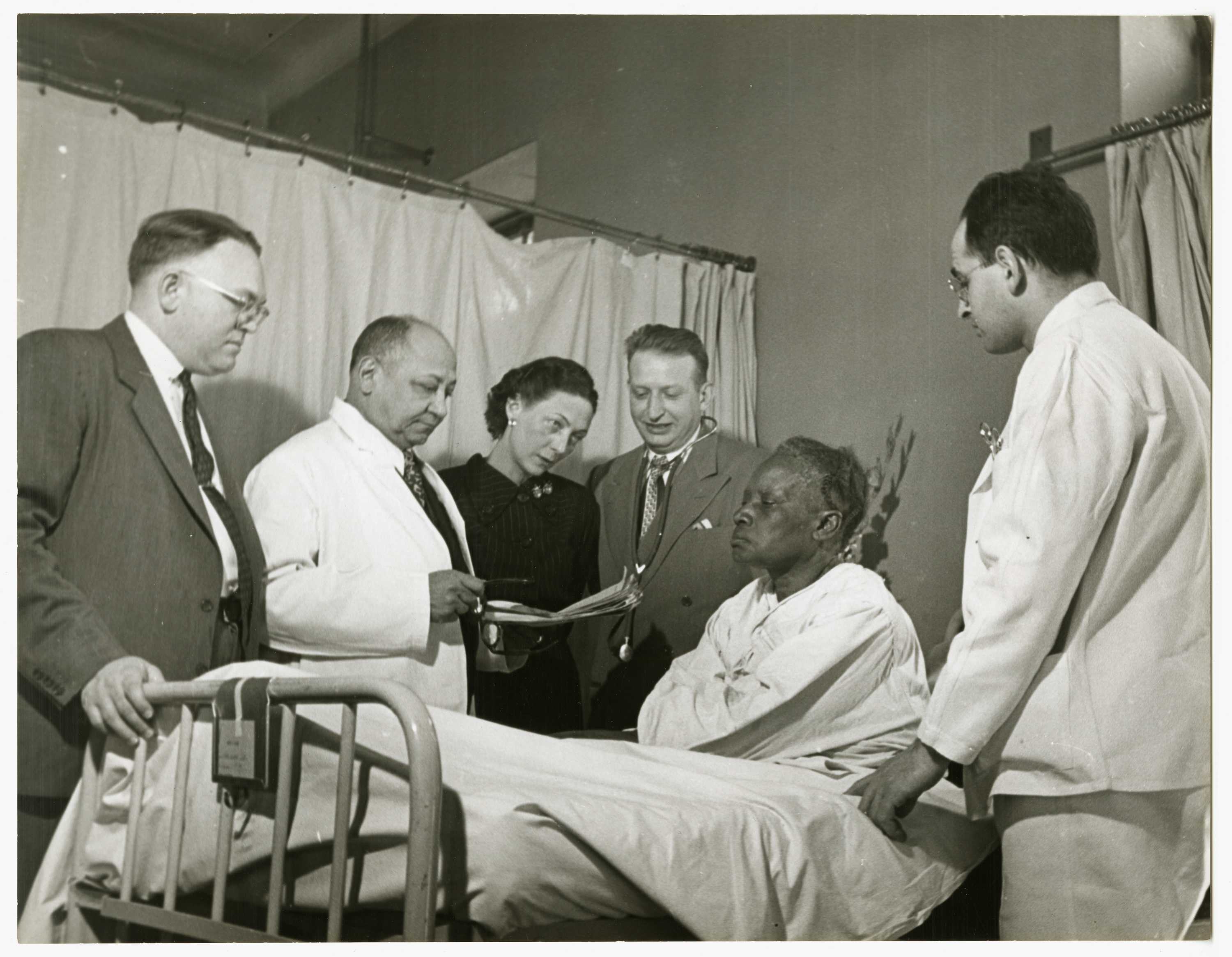1872
1920
Reframing the Narrative: From the National Medical Association through the Flexner Report
This period saw intense debate over the admission of women to HMS (who continued to be denied admission throughout this period), and the admission of only 35 Black students. Yet it was notable for such important accomplishments as the establishment of the Lewis and Harriet Hayden Scholarship for Colored Students, the initiation of the training of Black nurses in Boston, and the graduation of such HMS luminaries as William A. Hinton and Louis Tompkins Wright.
Key Events
After the Civil War, Harvard Medical School (HMS) began to accept Black students, although in small numbers (often no more than one Black student per matriculating class).
The first scholarship supporting Black students at HMS was established in 1893 when Harriet Hayden, the wife of Lewis Hayden, donated funds to establish a scholarship for "needy and worthy colored students in the Harvard Medical School," named The Lewis and Harriet Hayden Scholarship for Colored Students. Harriet and Lewis Hayden were members of Boston's Black community who had escaped slavery and arrived in Boston in 1846. Lewis Hayden, a noted abolitionist, ran a clothing store, and was elected to the Massachusetts House of Representatives in 1873. He died in 1889, and his wife, Harriet, bequeathed money to HMS to support educating students of color. The scholarship continues to be awarded to this day.
For contemporary information about the Hayden Scholarship, see: https://news.harvard.edu/gazette/story/2015/02/legacy-of-resolve/.
Although the New England Hospital for Women and Children cared for Boston's Black community, many hospitals did not welcome Black patients or grant hospital privileges to Black physicians or train Black nurses. Plymouth Hospital was founded by Dr. Corneilius Garland, who received his medical degree from Leonard Medical College, Raleigh, North Carolina. Garland began practicing in Boston in 1903 and maintained the Plymouth Hospital from 1908 until 1928. Garland's plan was to expand the school and hospital, but opponents thought that a separate hospital for Black physicians and patients would uphold segregation in Boston. After the Plymouth Hospital closed, in 1929, Boston City Hospital accepted Black nurses and physicians to its training programs, although it did not appoint a Black physician to the staff until 1949.
Alice Hamilton was hired as an assistant professor in 1919 to create the Department of Industrial Medicine at Harvard Medical School. Although her appointment was in the Faculty of Medicine, she taught through the Harvard-MIT School of Public Health.
Dr. Hamilton was hired with three caveats: she could not participate in Commencement; she could not attend the Harvard Faculty Club; and she was not given complimentary football tickets.
Key People
Graduated Harvard Medical Class of 1869
Edwin C.J.T. Howard was born in Boston on October 21, 1846, and attended Boston Latin School. He studied at Liberia College in Monrovia, Liberia from 1861 to 1865 and under Dr. Charles B. Dunbar. He returned to Boston and his name appears in the “Catalogue of Students Attending the 1866 Summer Session.” Howard graduated in 1869; his thesis was on Puerperal Fever. After graduation, Howard entered the practice of medicine in Charleston, South Carolina and then moved to Philadelphia, Pennsylvania, where he was instrumental in establishing the Frederick Douglass Memorial Hospital in 1895. He was also instrumental in establishing the Mercy Hospital in Philadelphia in 1905 and the Sigma Pi Phi Society, the first Black fraternity in the United States. Howard died of diabetes on May 10, 1912 in his home in Philadelphia.
Graduated Harvard Medical Class of 1871
James Thomas Still was born July 12, 1840, in Medford, New Jersey, the grandson of runaway slaves and the son of Dr. James and Henrietta Still. Two years after the end of the Civil War, Still matriculated and is first listed in the Catalogue of Students for the winter class of 1867-1868. He graduated with honors in 1871, having written a thesis on “Hay Asthma and Hay Fever.” He remained in Boston after medical school and practiced medicine at 166 Cambridge Street. He was the first African-American elected to the Boston School Board and served as surgeon in the 2nd Battalion of the Massachusetts Volunteer Militia from 1871 to 1874. He died on June 22, 1895, after a short illness from Bright’s disease.
Mary Eliza Mahoney was the first African American to study and work as a professionally trained nurse in the United States. She gained her diploma in 1879 from the New England Hospital for Women and Children's training program, one of the first to allow women to work to enter the healthcare profession. Mahony co-founded the National Association of Colored Graduate Nurses in 1908 (the organization merged with the American Nurses Association in 1951).
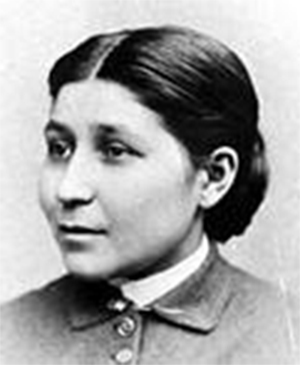
A member of the Omaha Tribe, Susan La Flesche was born in Nebraska Territory in June 1865. Her father, Joseph La Flesche, of Indian and French descent, became chief of the Omahas in 1853. He believed assimilation into the White culture would save the tribe from extinction. Susan La Flesche was educated in Western schools and graduated from Hampton Normal and Agricultural Institute (now Hampton University). Three years later, in 1889, she graduated valedictorian from the Women’s Medical College of Pennsylvania, making her the first American Indian to earn a medical degree in the United States.
Dr. La Flesche, at 24 years of age, returned to Nebraska where she worked for the Office of Indian Affairs serving the Omaha and Winnebago Tribes. She was the sole physician for 1,244 patients across 450+ square miles. Dr. La Flesche also served the Omahas as a lawyer, accountant, priest, and political and public health advocate. She married Henry Picotte in 1894. After his death in 1905, she opened a private practice in Bancroft, Nebraska serving both Indian and White patients. Through the solicitation of private donations she built the first modern hospital in Thurston County, in the Omaha reservation town of Walthill, in 1913. After her death in 1915, the hospital was renamed the Dr. Susan LaFlesche Picotte Memorial Hospital. The hospital closed in 1940 and is now a National Historic Landmark.
The following link provides a short film on Dr. Susan La Flesche Picotte: American Masters PBS | First American Indian Doctor
Charles A. Eastman, MD, graduated from the Boston University School of Medicine in 1890. He was among the first Native Americans to earn a medical degree in the United States. Dr. Eastman is known as one of the first Native American historians, founded thirty-two Native American chapters of the Young Men's Christian Association, and helped to found the Boy Scouts of America.
Graduated Harvard Medical School Class of 1912
William A. Hinton was born on December 15, 1883, in Chicago, Illinois. His parents had both been enslaved. He entered Harvard College in 1902 and graduated in 1905. Between college and medical school, Hinton taught at Walden University in Nashville, Tennessee, the Agricultural and Mechanical College in Langston, Oklahoma, and at Meharry Medical College, and continued his own education during the summer at the University of Chicago. He entered HMS in 1909 and completed his degree in 1912. Hinton was awarded the Hayden scholarship, reserved for African American students, but turned it down and competed and was awarded the Wigglesworth Scholarship. He wanted to specialize in surgery, but after being denied by Boston-area hospitals, turned to the laboratory. In 1912, he began working part-time as a volunteer assistant in the Department of Pathology at Massachusetts General Hospital, and for three years performed autopsies on all persons suspected of having syphilis. He then worked at the Wassermann Laboratory, which was the Massachusetts State Laboratory for communicable diseases at HMS.
During this time, Dr. Hinton developed a new serological test for syphilis which became the standard, known as the Hinton test.
In 1915, the Wassermann Laboratory was transferred from HMS to the Massachusetts Department of Public Health, and Hinton was appointed Assistant Director of the Division of Biologic Laboratories and Chief of the Wassermann Laboratory, a position in which he served for 38 years. The serology lab at the Massachusetts Department of Public Health's Laboratory Institute Building was named for Dr. Hinton.
Dr. Hinton began teaching at HMS in 1918 as Instructor in Preventive Medicine and Hygiene, and in 1921, his responsibilities expanded to include Bacteriology and Immunology. He was appointed Instructor in Bacteriology and Immunology in 1946, twenty five years after his first appointment. He was promoted to Clinical Professor in 1949, thus becoming the first African-American Professor at Harvard University. He only gained promotion one year before his retirement.
Graduated Harvard Medical School Class of 1915
Louis Tompkins Wright, born on July 23, 1891, in La Grange, Georgia, was son of physician Dr. Ceah Ketcham Wright. Dr. Wright died when Louis was four years old, and his mother, Lula Tompkins Wright, later remarried another physician, Dr. William Fletcher Penn, the first Black medical graduate of Yale University.
Wright graduated from Clark University in Atlanta, Georgia in 1911 as class valedictorian, and graduated from HMS in 1915. Wright graduated cum laude, and ranked fourth in his class. Despite his academic achievement, he was asked to march at the end of the procession rather than in his rightful place at the head.
He applied for internship at Massachusetts General Hospital, the Boston City Hospital, and the Peter Bent Brigham Hospital and was turned down from each hospital. He accepted a position at the segregated Freedman’s Hospital in Washington, D.C.
At the end of his internship in 1916, Wright took the licensing exam in Maryland, Georgia, and New York, achieving high scores in each state. He returned to Atlanta to practice with his stepfather, and was then commissioned as a First Lieutenant in the US Army Medical Corps.
In 1919, he settled in New York City, where he opened a general practice of surgery in Harlem, and was appointed Assistant Physician in the Health Department Venereal Disease Clinic. He also accepted a position as Clinical Assistant Visiting Surgeon at Harlem Hospital. Throughout his career, Wright fought to integrate and improve Harlem Hospital and was eventually made Surgical Director.
In addition to his work at Harlem Hospital, Dr. Wright was appointed police surgeon of the City of New York in 1929, the first African American to be appointed as police surgeon in the United States. He was also the first African American admitted to fellowship in the American College of Surgeons (1934) and to honorary fellowship in the International College of Surgeons (1950). He was a leader of the group that formed the Manhattan Central Medical Society in 1930 and a founder of the Harlem Surgical Society in 1937.
In 1948 he established both the Harlem Hospital Cancer Research Foundation and the Harlem Hospital Bulletin.
In 1934, Wright took over chairmanship of the Board of Directors of the National Association for the Advancement of Colored People (NAACP), which he occupied until his death in 1952.
Dr. Wright's papers are available at the Center for the History of Medicine.
